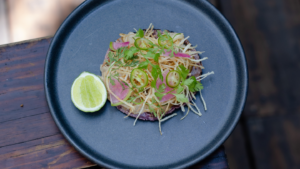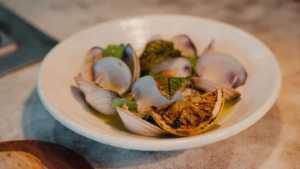(2 minute read)
When we think of Mexican cuisine, cilantro is likely one of the first ingredients that come to mind. Celebrated for its freshness and versatility, it has woven its way through continents and cultures, establishing itself as a staple in our gastronomy.
Essential ingredients like cacao, corn, vanilla, chili, and tomato, to name a few, all native to this continent, have crossed oceans to enrich cuisines around the world with their distinctive flavor.
And some, came from there to here afterward. Originating in the Mediterranean, the history of cilantro dates back to the ancient Egyptian pharaohs; it is said that the famous King Tutankhamun was buried with this aromatic herb.
In Europe, especially in the Iberian Peninsula, cilantro is used in traditional recipes like Andalusian gazpacho and Portuguese cataplana, dishes where its distinctive flavor perfectly complements seafood and fresh vegetables.
In Asia, cilantro is an essential ingredient in Indian cuisine, enhancing dishes like cilantro chutney and chicken tikka masala, where its freshness balances the intensity of the spices. In Vietnam, cilantro leaves garnish pho, an aromatic noodle soup, adding a touch of green and freshness.
As it transcended its native borders, it found a special place in Indian cuisine and was enthusiastically embraced when brought to this side of the ocean. The influence of Mexico and America in general, on the global culinary landscape, is heavily laden with cilantro, where it has become a symbol of our culinary identity.
With its distinctive and slightly citrusy flavor, in Mexico, cilantro has played a crucial role in creating flavors that are as complex as they are balanced. From guacamole to salsas, ceviches, beans, snacks, and soups, cilantro adds that touch of green magic that enhances and deepens every flavor it combines with.
Although cilantro is available year-round, it is in spring when it reaches its peak splendor. The climatic conditions favor its growth, and its leaves become more tender and full of flavor.
During this season, in the kitchen of our restaurants, we make the most of this herb to enhance dishes with its characteristic freshness. That’s why we choose to share the recipe of two of our dishes in which cilantro plays a fundamental role: “Clams like in Lisbon” from our restaurant in Sanjo and the “Fresh fish tostada” from Tulum.
In the clams, cilantro provides a fresh contrast that enhances the richness of the seafood, along with garlic and olive oil, while in the fish tostada, its presence adds a dimension of freshness that perfectly complements the combination of flavors and textures provided by the corn tostada and soy mayonnaise. In both cases, cilantro is not just a mere accompaniment; it becomes a transformative element that balances and defines each dish, demonstrating its versatility and the value it adds to our cuisine.
Enjoy!






